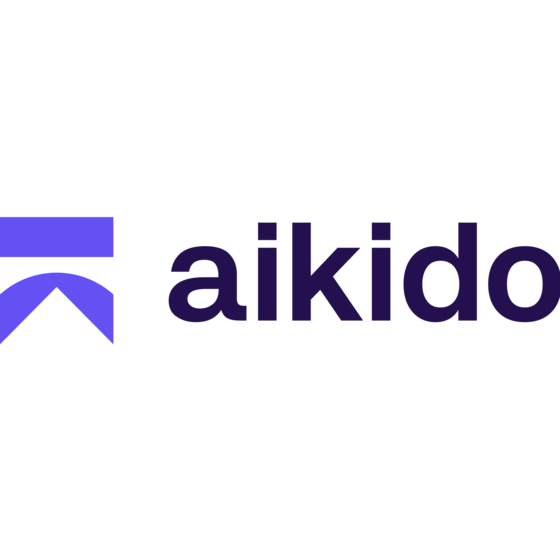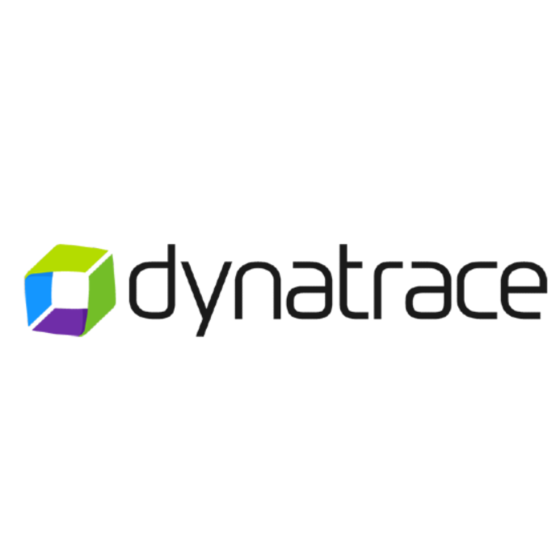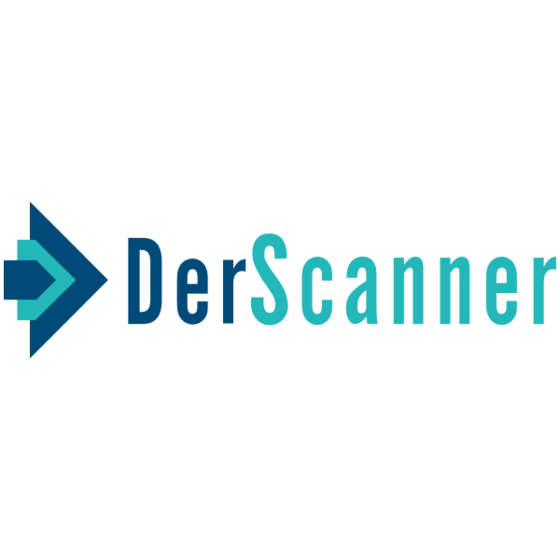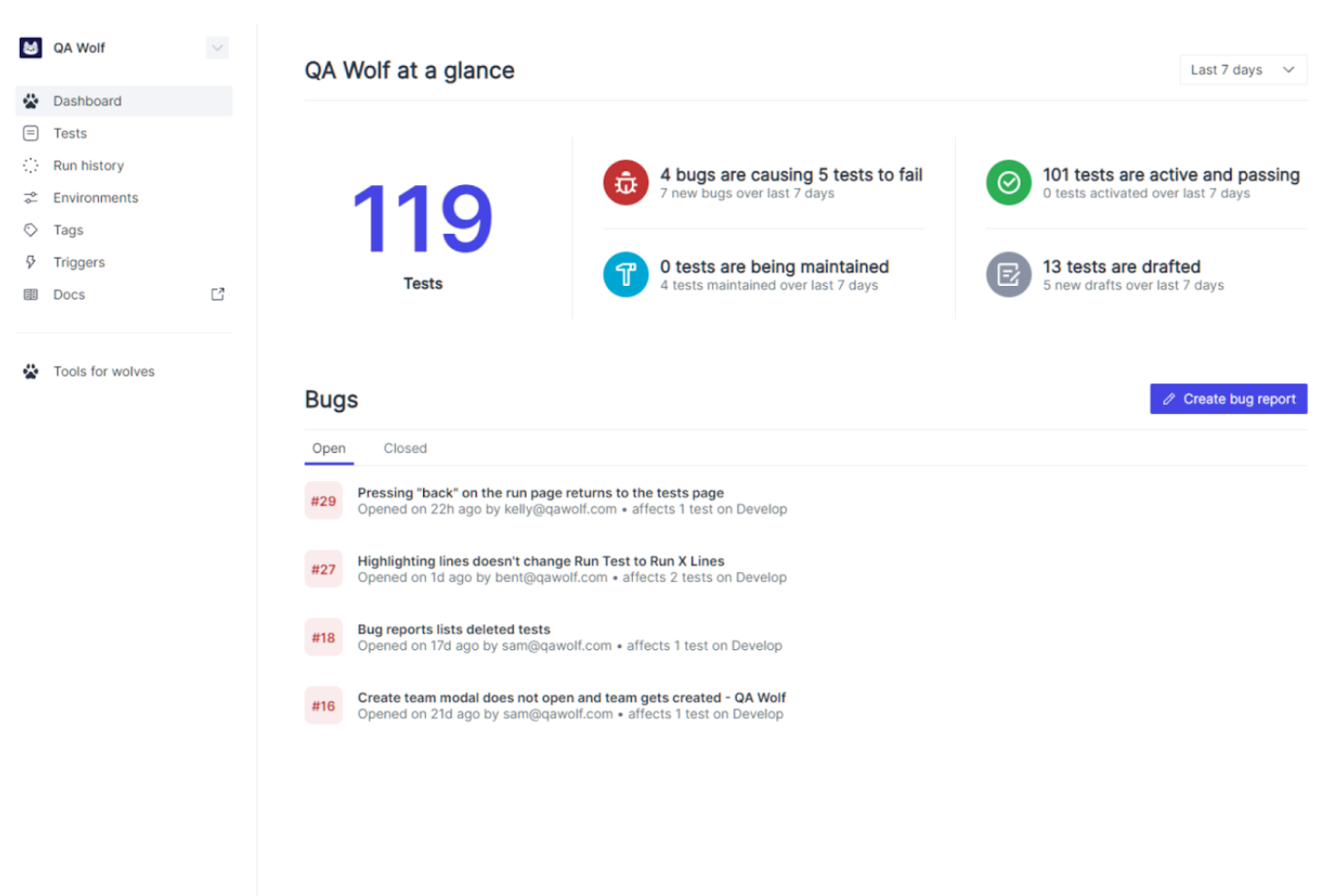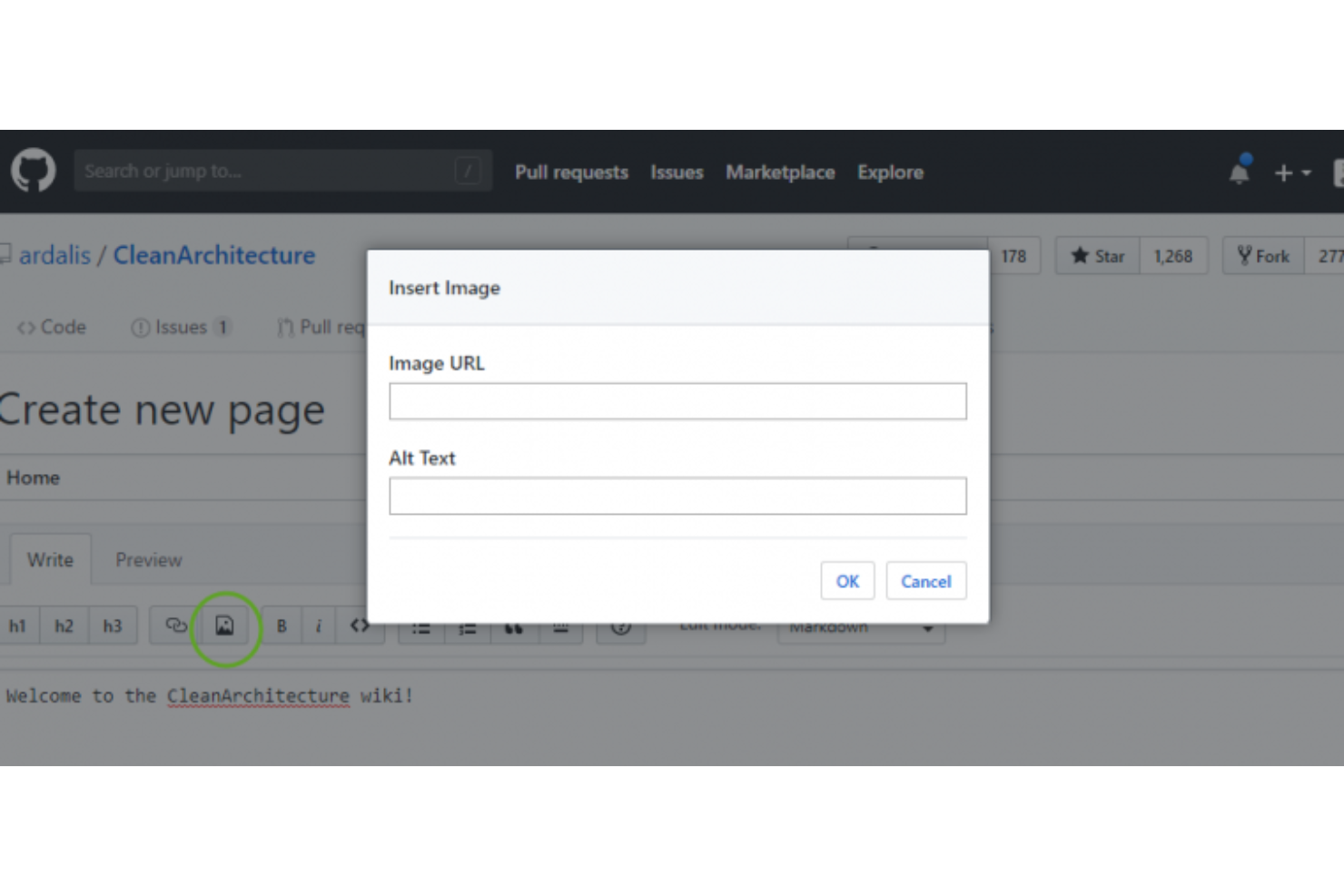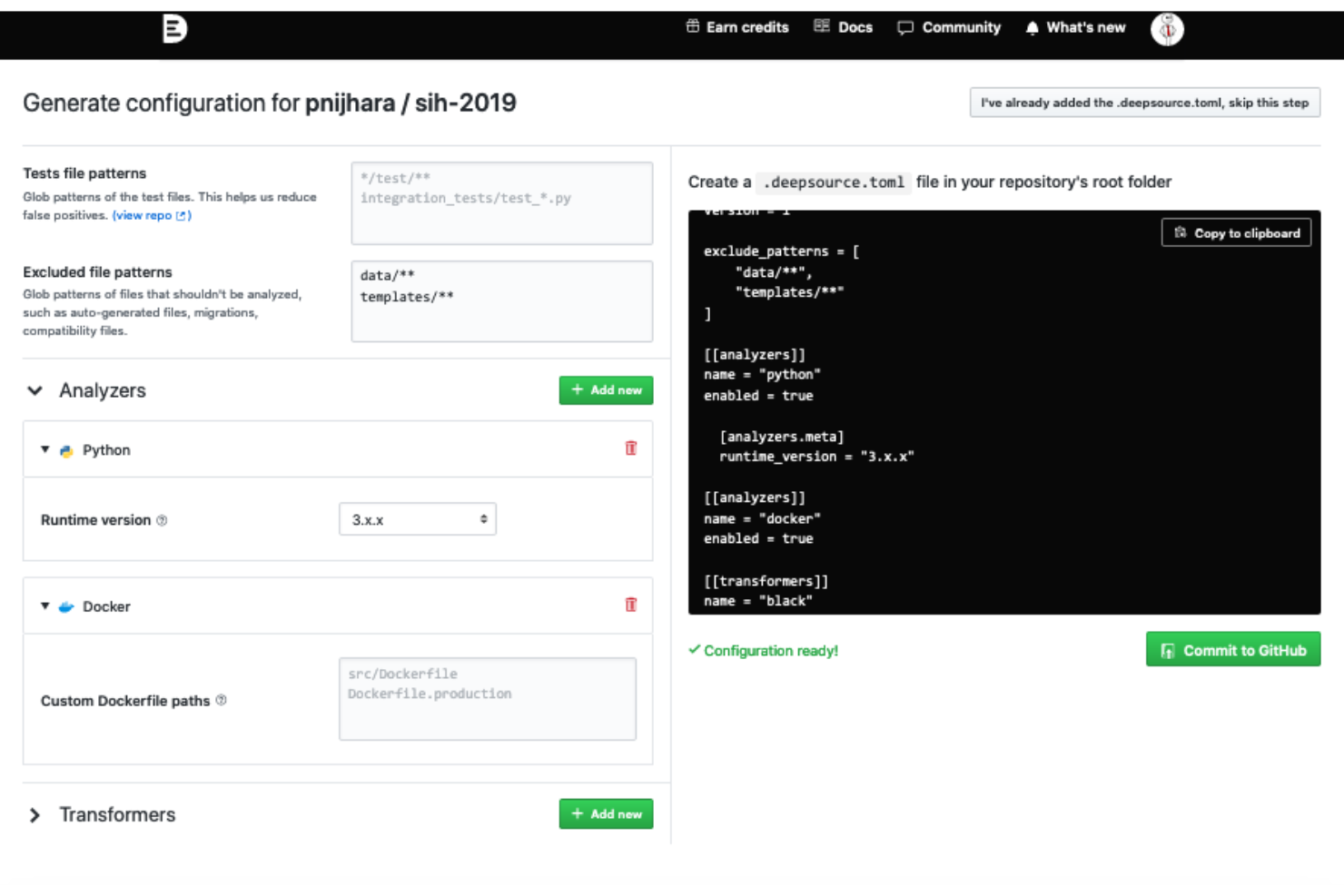Best Static Application Security Testing Tools Shortlist
Here’s my shortlist of the best static application security testing tools:
Our one-on-one guidance will help you find the perfect fit.
Ensuring your code is secure and free of vulnerabilities is a constant challenge. Static application security testing tools can be your go-to solution for catching bugs early and safeguarding your software.
I know it can be tough to choose the right tool when there are so many options out there. That’s why I’ve independently tested and reviewed various tools, focusing on what really matters to you and your team.
In this article, I’ll share my top picks, diving into the features, pros, and cons of each. Whether you're a small startup or a large enterprise, you'll find insights to help you make an informed decision.
Why Trust Our Software Reviews
We’ve been testing and reviewing SaaS development software since 2023. As tech experts ourselves, we know how critical and difficult it is to make the right decision when selecting software. We invest in deep research to help our audience make better software purchasing decisions.
We’ve tested more than 2,000 tools for different SaaS development use cases and written over 1,000 comprehensive software reviews. Learn how we stay transparent & check out our software review methodology.
Best Static Application Security Testing Tools Summary
This comparison chart summarizes pricing details for my top static application security testing tools selections to help you find the best one for your budget and business needs.
| Tool | Best For | Trial Info | Price | ||
|---|---|---|---|---|---|
| 1 | Best for AI SAST scanning | Free demo available | From $1000/user/year | Website | |
| 2 | Best for scalable vulnerability detection | Free plan available + free demo | From $350/month | Website | |
| 3 | Best for unlimited parallel test runs | Free demo available | Pricing upon request | Website | |
| 4 | Best for open-source collaboration | 30-day free trial available | From $4/user/month | Website | |
| 5 | Best for real-time observability | 15-days free trial + free demo | Pricing upon request | Website | |
| 6 | Best for real-time observability | Free plan + demo available | Pricing upon request | Website | |
| 7 | Best for vulnerability detection | Free demo available | Pricing upon request | Website | |
| 8 | Best for code quality analysis | Free plan + demo available | From $8/seat/month (billed annually) | Website | |
| 9 | Best for real-time code analysis | Not available | From $10/user/month (billed annually) | Website | |
| 10 | Best for fast vulnerability detection | Not available | $12,000/year/minimum of 20 developers | Website |
-

Docker
Visit WebsiteThis is an aggregated rating for this tool including ratings from Crozdesk users and ratings from other sites.4.6 -

Pulumi
Visit WebsiteThis is an aggregated rating for this tool including ratings from Crozdesk users and ratings from other sites.4.8 -

GitHub Actions
Visit Website
Best Static Application Security Testing Tool Reviews
Below are my detailed summaries of the best static application security testing tools that made it onto my shortlist. My reviews offer a detailed look at the key features, pros & cons, integrations, and ideal use cases of each tool to help you find the best one for you.
Mend.io is a static application security testing (SAST) platform that helps you detect and remediate vulnerabilities directly in your codebase. It uses commit-based scanning to target new code changes, reducing false positives and scanning time. With AI-generated fix suggestions, Mend.io supports your development team without interrupting release cycles.
Why I picked Mend.io: I picked Mend.io because of how it handles scan speed and precision. Traditional SAST tools often slow down large codebases and surface high volumes of false positives. Mend.io uses commit-based scanning to focus on new changes, helping your team prioritize the most relevant findings. AI-powered remediation suggestions can also offer fix recommendations directly in your codebase, saving developers time during triage.
Standout features & integrations:
Features include AI-generated code fixes that can suggest remediations without requiring manual edits, on-prem scanning with cloud-based analysis for added privacy control, and customizable scan configurations to fine-tune your vulnerability detection. Mend.io also supports multiple languages and hybrid deployment options.
Integrations include Azure DevOps, Bitbucket Cloud, Azure Repos, Bitbucket Data Center, GitHub.com, GitHub Enterprise, GitLab, Mend Remediate, IDE Integrations, Browser Integration, Mend Developer Platform, and Classic Repository Integrations.
Pros and cons
Pros:
- Covers full application security stack
- Hybrid static and dynamic testing
- Supports CI/CD integrations directly
Cons:
- Some integrations need manual setup
- Limited language support for some
New Product Updates from Mend.io
Multi-Organization Support, Microsoft Defender Integration, and Dashboard Enhancements
The latest Mend.io update introduces multi-organization support in the Mend for Jira Cloud plugin, integration with Microsoft Defender for Cloud, and enhancements to the Value Dashboard. For more details, visit Mend.io Release Notes.
Aikido Security offers a Static Application Security Testing (SAST) solution aimed at securing code, cloud, and runtime environments. It's designed for developers across industries like FinTech, HealthTech, and startups, focusing on vulnerability detection and compliance support.
Why I picked Aikido Security: Aikido Security specializes in scalable vulnerability detection, ensuring genuine security issues are prioritized. It integrates seamlessly with CI/CD pipelines and IDEs for real-time detection. Users can customize rules to fit their specific needs, and AI-powered one-click fixes simplify the remediation process. Its support for compliance with standards like SOC 2 and ISO further enhances its appeal.
Standout features & integrations:
Features include vulnerability detection that minimizes false alerts, customizability for tailored rule creation, and automated compliance support for standards like SOC 2 and ISO.
Integrations include Azure Pipelines, Jira, GitHub, Bitbucket, GitLab, Slack, Trello, Jenkins, CircleCI, and Travis CI.
Pros and cons
Pros:
- Real-time detection
- Great for compliance support
- Scalable for large teams
Cons:
- Limited offline support
- May require technical setup
QA Wolf is a hybrid platform and service aimed at software teams in industries like fintech, healthcare, and eCommerce. It provides automated end-to-end test coverage for web and mobile applications, enhancing quality assurance and reducing QA costs.
Why I picked QA Wolf: QA Wolf excels in offering unlimited parallel test runs, which is a game-changer for teams looking to speed up their testing processes. The platform's human-verified bug reports help ensure accuracy. Its zero-flake guarantee reduces the chances of flaky tests, making it reliable for consistent testing. The AI-driven test creation and maintenance improve productivity by minimizing the time spent on QA tasks.
Standout features & integrations:
Features include human-verified bug reports that ensure accuracy, a zero-flake guarantee to reduce flaky tests, and AI-driven test creation for improved productivity.
Integrations include GitHub, GitLab, Bitbucket, Slack, Jira, Trello, Asana, CircleCI, Jenkins, Travis CI, and Azure DevOps.
Pros and cons
Pros:
- AI-driven test creation
- Human-verified bug reports
- Unlimited parallel test runs
Cons:
- May need technical expertise
- Not ideal for small teams
GitHub is a collaborative software development platform widely used by developers across various industries, including healthcare and finance. It offers tools for security, automation, and code management, making it suitable for tasks like DevSecOps and CI/CD.
Why I picked GitHub: GitHub excels in open-source collaboration, providing a platform where developers can work together on projects from anywhere. Its built-in application security tools use AI to quickly identify and address vulnerabilities, which supports its USP. GitHub Actions automate workflows, enhancing efficiency in managing code changes. With GitHub Advanced Security, you gain enterprise-grade security options to protect your codebase.
Standout features & integrations:
Features include GitHub Copilot for AI-assisted coding, GitHub Actions for workflow automation, and Codespaces for instant development environments. These features enhance collaboration and streamline development processes.
Integrations include Slack, Trello, Jira, Visual Studio, Azure DevOps, Google Cloud, AWS, Heroku, Docker, and Kubernetes.
Pros and cons
Pros:
- GitHub Actions for automation
- AI-driven security tools
- Extensive open-source community
Cons:
- Dependency on Git knowledge
- Potential for complex configurations
Dynatrace is an all-in-one software intelligence platform used by IT and DevOps teams across various sectors. It provides monitoring and analytics for applications, infrastructure, and user experience, helping teams optimize performance and ensure reliability.
Why I picked Dynatrace: Dynatrace offers real-time observability, making it a top choice for teams needing instant insights into their systems. Its AI-powered root cause analysis helps quickly identify issues, saving you time. The platform's full-stack monitoring covers everything from applications to infrastructure. Additionally, automated deployment and scaling simplify managing complex environments.
Standout features & integrations:
Features include AI-driven root cause analysis that speeds up troubleshooting, full-stack monitoring to cover applications and infrastructure, and automated deployment for simplified management of complex environments.
Integrations include AWS, Azure, Google Cloud, Kubernetes, ServiceNow, Slack, Jira, Microsoft Teams, Ansible, and Puppet.
Pros and cons
Pros:
- Full-stack monitoring
- AI-driven root cause analysis
- Real-time data analysis
Cons:
- Complex initial setup
- High resource consumption
New Relic is an observability platform tailored for developers, offering monitoring solutions for applications and infrastructure. It's designed for IT teams looking to enhance performance and gain insights through data analysis.
Why I picked New Relic: New Relic excels in real-time observability, providing instant insights into application performance. Its ability to monitor an entire stack in real-time with pre-built dashboards is a key differentiator. The platform supports over 780 integrations, ensuring comprehensive visibility across programming environments. This makes it a versatile tool for troubleshooting and enhancing user experience.
Standout features & integrations:
Features include end-to-end monitoring set up in under five minutes, comprehensive visibility across various programming environments, and actionable insights to proactively troubleshoot issues.
Integrations include AWS, Azure, Google Cloud, Kubernetes, Slack, Jira, PagerDuty, ServiceNow, Splunk, and Datadog.
Pros and cons
Pros:
- Actionable performance insights
- Supports extensive integrations
- Real-time application monitoring
Cons:
- Dependency on internet connectivity
- High data volume costs
DerScanner is a static application security testing tool ideal for InfoSec and IT security managers. It integrates dynamic, static, and mobile application security testing to help organizations secure their code while maintaining privacy.
Why I picked DerScanner: It excels in vulnerability detection, offering a unified platform for static, dynamic, and mobile security testing. Its compliance with CWE standards ensures thorough security checks. The tool's ability to scan both proprietary and open-source code makes it versatile for different environments. A user-friendly interface adds to its appeal, making it accessible for various team members.
Standout features & integrations:
Features include efficient scanning of both proprietary and open-source code, compliance with Common Weakness Enumeration standards, and a user-friendly interface that simplifies security processes.
Integrations include Jenkins, Jira, GitHub, GitLab, Bitbucket, Azure DevOps, Slack, Bamboo, CircleCI, and Travis CI.
Pros and cons
Pros:
- Supports open-source and proprietary code
- Compliance with CWE standards
- Unified security testing
Cons:
- Limited offline support
- May need technical expertise
DeepSource is a static application security testing tool designed for software developers and engineering teams. It focuses on improving code quality and security through automated code reviews and bug detection.
Why I picked DeepSource: DeepSource excels in code quality analysis, offering automated code reviews that catch issues early in the development cycle. Its ability to detect a wide range of code issues, from security vulnerabilities to performance bottlenecks, sets it apart. The platform supports multiple programming languages, making it versatile for diverse codebases. Additionally, its customizable rules allow teams to tailor checks to their specific needs.
Standout features & integrations:
Features include automated code reviews that identify issues early, support for multiple programming languages, and customizable rules that let you tailor checks to your needs.
Integrations include GitHub, GitLab, Bitbucket, Slack, Jira, Trello, Azure DevOps, CircleCI, Jenkins, and Travis CI.
Pros and cons
Pros:
- Supports many languages
- Versatile for diverse codebases
- Automated code reviews
Cons:
- Limited offline access
- Requires configuration
Codiga is a highly scalable static analysis (SAST) tool that enables developers to write faster code. It facilitates left-shift coding philosophy by enabling DevSecOps and QA teams to detect quality defects early in the software development cycle. Codiga allows you to automate your code reviews with code analysis supported by context-based suggestions.
It boosts productivity, especially for developers who work on multiple computers and platforms, by making all their code snippets easily available. Moreover, Codiga’s Coding Assistant allows developers to write, reuse, and share code snippets directly from their IDE with other team members instead of engaging in their manually arduous task of searching for it.
Meanwhile, Codiga’s Automated Code Review immediately discovers and identifies vulnerabilities and coding problems during pull requests. In addition to capturing bad coding practices such as code duplicates and complex functions, it also reports outdated dependencies as reflected by CVE lists.
In addition to automated testing features, Codiga also provides source coding scanning, workflow management, quality assurance, application security, collaboration tools, and so on. Codiga is also a continuous integration tool for CI pipelines.
Codiga has a free version which is ideal for open-source developers. However, Teams is its priced tier costing $14/month for software engineering teams.
Mend SAST allows DevOps teams to perform extensive yet deep security analysis of application source code without sacrificing speed. It strives to remove the burden of application security as much as possible so developers can produce quality and secure code.
Mend SAST was previously known as WhiteSource. It is ideal for enterprise applications as it has a strong reputation for meeting the security needs of complex and large-scale software projects. It also provides built-in data governance, with support for a range of infrastructural needs, whether on-premise, the cloud, or hybrid solutions.
It also offers automated remediation which highlights the specific code changes required to fix the flaws in the code.
Mend SAST offers Teams and Enterprise editions. Teams charge a minimum of 20 developers per year at $12,000. On the other hand, Enterprise can only be used for a minimum of 40 developers per year at $32,000.
Other Static Application Security Testing Tools
Here are some additional static application security testing tools options that didn’t make it onto my shortlist, but are still worth checking out:
- GuardRails
For developer-first security
- Nexus Lifecycle
For open-source management
- GitLab
For integrated DevOps workflows
- StackHawk
For automated security testing
- SonarQube
For continuous code quality
- IDA Pro
For advanced binary analysis
- Flawnter
For in-depth code inspection
- Codacy
DevOps intelligence platform with high-quality code on 40+ programming languages.
- Klocwork
Static code analysis and SAST tool for C, C++, C#, Java, JavaScript, Python, and Kotlin.
- Reshift
Code security tool that secures your code as you build
- LGTM.COM
Free SAST tool for open source projects.
- Checkmarx
Fast and accurate scans easily integrated into the tools you use daily, with remediation guidance.
- Brinqa
Consolidate, prioritize and manage findings from all your AST tools.
- Veracode
Integrate automated AppSec testing into your CI/CD pipeline.
- INSIDER CLI
Covers the OWASP Top 10 to make source code analysis to find vulnerabilities right in the source code.
- SpectralOps
Advanced AI backed technology with over 2000 detectors to discover and classify your data silos and uncover data breaches.
Static Application Security Testing Tool Selection Criteria
When selecting the best static application security testing tools to include in this list, I considered common buyer needs and pain points like vulnerability detection and integration with development workflows. I also used the following framework to keep my evaluation structured and fair:
Core Functionality (25% of total score)
To be considered for inclusion in this list, each solution had to fulfill these common use cases:
- Detecting vulnerabilities in code
- Integrating with CI/CD pipelines
- Supporting multiple programming languages
- Providing detailed security reports
- Enabling secure coding practices
Additional Standout Features (25% of total score)
To help further narrow down the competition, I also looked for unique features, such as:
- Real-time vulnerability alerts
- Customizable security rules
- AI-driven code analysis
- Compliance with industry standards
- Automated remediation suggestions
Usability (10% of total score)
To get a sense of the usability of each system, I considered the following:
- Intuitive user interface
- Easy navigation through features
- Minimal learning curve
- Responsive design
- Clear documentation
Onboarding (10% of total score)
To evaluate the onboarding experience for each platform, I considered the following:
- Availability of training videos
- Interactive product tours
- Access to webinars and tutorials
- Onboarding templates
- Post-purchase support resources
Customer Support (10% of total score)
To assess each software provider’s customer support services, I considered the following:
- 24/7 support availability
- Live chat options
- Comprehensive knowledge base
- Responsive email support
- Dedicated account managers
Value For Money (10% of total score)
To evaluate the value for money of each platform, I considered the following:
- Competitive pricing
- Range of features included
- Flexible pricing plans
- Free trial availability
- Cost relative to features offered
Customer Reviews (10% of total score)
To get a sense of overall customer satisfaction, I considered the following when reading customer reviews:
- Overall satisfaction ratings
- Feedback on feature effectiveness
- Comments on ease of use
- Insights on support quality
- Value for money perceptions
How to Choose Static Application Security Testing Tools
It’s easy to get bogged down in long feature lists and complex pricing structures. To help you stay focused as you work through your unique software selection process, here’s a checklist of factors to keep in mind:
| Factor | What to Consider |
| Scalability | Ensure the tool can grow with your team. Look for solutions that handle increased code volume and user numbers without a hitch. |
| Integrations | Check compatibility with your existing tools like GitHub, Jenkins, or Slack. Seamless integration saves time and boosts productivity. |
| Customizability | Choose a tool that lets you tailor security rules to fit your specific coding and compliance needs. |
| Ease of Use | Opt for a user-friendly interface that your team can learn quickly. A steep learning curve can slow down implementation and productivity. |
| Budget | Consider the total cost of ownership, including licensing, training, and support. Make sure it fits within your budget constraints. |
| Security Safeguards | Evaluate the tool’s ability to identify vulnerabilities and its compliance with industry standards like OWASP or ISO. |
| Support | Reliable customer support is crucial. Ensure the vendor offers 24/7 support and resources like tutorials and a knowledge base to assist your team. |
| Performance | Assess the tool’s speed in scanning and reporting. Delays in these areas can impact your development timeline. |
Trends in Static Application Security Testing Tools
In my research, I sourced countless product updates, press releases, and release logs from different static application security testing tools vendors. Here are some of the emerging trends I’m keeping an eye on:
- AI-Powered Analysis: AI is being used to enhance code analysis tools, making vulnerability detection faster and more accurate. Some vendors are integrating machine learning to predict potential security risks before they occur, offering a proactive approach to security.
- Shift-Left Security: More tools are incorporating security checks earlier in the development lifecycle. This trend helps developers catch vulnerabilities during the coding phase, reducing the risk of issues in production. Vendors are creating features that integrate directly into IDEs for real-time feedback.
- Cloud-Native Security: As more applications move to the cloud, tools are focusing on securing cloud-native environments. This includes features that address container security and Kubernetes configurations, ensuring applications are secure from development to deployment.
- Developer-Centric Features: There's a growing emphasis on making security tools more developer-friendly. This includes intuitive interfaces and actionable insights that help developers fix issues without needing extensive security knowledge, making security a shared responsibility.
- Compliance Automation: Automating compliance checks with industry standards like GDPR and PCI-DSS is becoming more common. Tools now offer automated reporting and alerts to ensure continuous compliance, reducing manual effort and ensuring businesses meet regulatory requirements efficiently.
What Are Static Application Security Testing Tools?
Static application security testing tools are software solutions that analyze source code to identify vulnerabilities without executing the program. They are generally used by developers, security analysts, and IT professionals to ensure code quality and maintain security standards. Features like AI-powered analysis, shift-left security, and compliance automation help with detecting vulnerabilities early, integrating security into development workflows, and meeting regulatory requirements. Overall, these tools provide essential security insights that protect applications from potential threats.
Features of Static Application Security Testing Tools
When selecting static application security testing tools, keep an eye out for the following key features:
- Vulnerability detection: Identifies potential security flaws in the code, helping you fix issues before they reach production.
- Integration with CI/CD pipelines: Ensures continuous security checks throughout the development lifecycle, enhancing workflow efficiency.
- Support for multiple languages: Allows analysis of different codebases, making the tool versatile for diverse projects.
- Compliance automation: Automates checks for industry standards, saving time and ensuring regulatory compliance.
- Real-time feedback: Provides instant insights into code security, enabling prompt action to address vulnerabilities.
- Customizable security rules: Lets you tailor security checks to fit specific organizational needs and requirements.
- AI-powered analysis: Enhances the accuracy of vulnerability detection by using machine learning to predict potential risks.
- Interactive interface: Offers an intuitive user experience, making it easier for teams to navigate and utilize the tool effectively.
Benefits of Static Application Security Testing Tools
Implementing static application security testing tools provides several benefits for your team and your business. Here are a few you can look forward to:
- Early vulnerability detection: Catch security issues in the development phase, reducing the risk of breaches and costly fixes later.
- Improved code quality: Automated software composition analysis tools and real-time feedback help maintain high standards and cleaner codebases.
- Compliance assurance: Automated compliance checks ensure that your software meets industry regulations without manual effort.
- Enhanced productivity: Integration with CI/CD pipelines and real-time feedback streamline your development process, saving valuable time.
- Cost savings: By identifying vulnerabilities early, you avoid expensive post-release patches and potential damage from security breaches.
- Developer empowerment: Tools with intuitive interfaces and customizable rules let developers take charge of security without needing extensive expertise.
- Scalable security practices: As your team grows, these tools can handle increased code volume and complexity, supporting your expanding needs.
Costs and Pricing of Static Application Security Testing Tools
Selecting static application security testing tools requires an understanding of the various pricing models and plans available. Costs vary based on features, team size, add-ons, and more. The table below summarizes common plans, their average prices, and typical features included in static application security testing tools solutions:
Plan Comparison Table for Static Application Security Testing Tools
| Plan Type | Average Price | Common Features |
| Free Plan | $0 | Basic vulnerability detection, limited language support, and community support. |
| Personal Plan | $5-$25/user/month | Expanded language support, basic integrations, and real-time feedback. |
| Business Plan | $30-$75/user/month | Advanced vulnerability detection, custom security rules, and CI/CD integration. |
| Enterprise Plan | $100-$200/user/month | Comprehensive compliance automation, priority support, and full customization. |
Static Application Security Testing Tools (FAQs)
Here are some answers to common questions about static application security testing tools:
Which tool is used for static application security testing?
Static application security testing tools like Veracode are commonly used to analyze code for vulnerabilities. These tools are essential for organizations looking to enhance their security posture by identifying and addressing potential security issues in source code before deployment.
When can static application security testing be used for any project?
You can use static application security testing tools early in the software development lifecycle. They don’t require a running application, so they are ideal for detecting vulnerabilities during the development phase, allowing you to address security concerns proactively.
Which of the following issues will not be found by SAST tools?
SAST tools cannot detect runtime issues since they analyze code without executing it. This means they won’t find problems like authentication failures or server misconfigurations, which require the application to be running to identify.
Can static application security testing help identify potential vulnerabilities?
Yes, static application security testing is effective at identifying potential vulnerabilities in an application’s source code. These tools perform white-box testing, which helps find the root causes of security flaws and provides guidance on remediation.
How does static application security software integrate with development workflows?
Static application security software integrates seamlessly with CI/CD pipelines and popular development environments. This integration allows for continuous security checks and real-time feedback, helping your team maintain secure coding practices throughout the development process.
What are the common limitations of static application security testing tools?
SAST tools may produce false positives and require manual validation of results. They also might not cover every programming language or framework, so it’s crucial to choose a tool that aligns with your specific development environment and needs.
What's Next?
Boost your SaaS growth and leadership skills. Subscribe to our newsletter for the latest insights from CTOs and aspiring tech leaders.
We'll help you scale smarter and lead stronger with guides, resources, and strategies from top experts!



